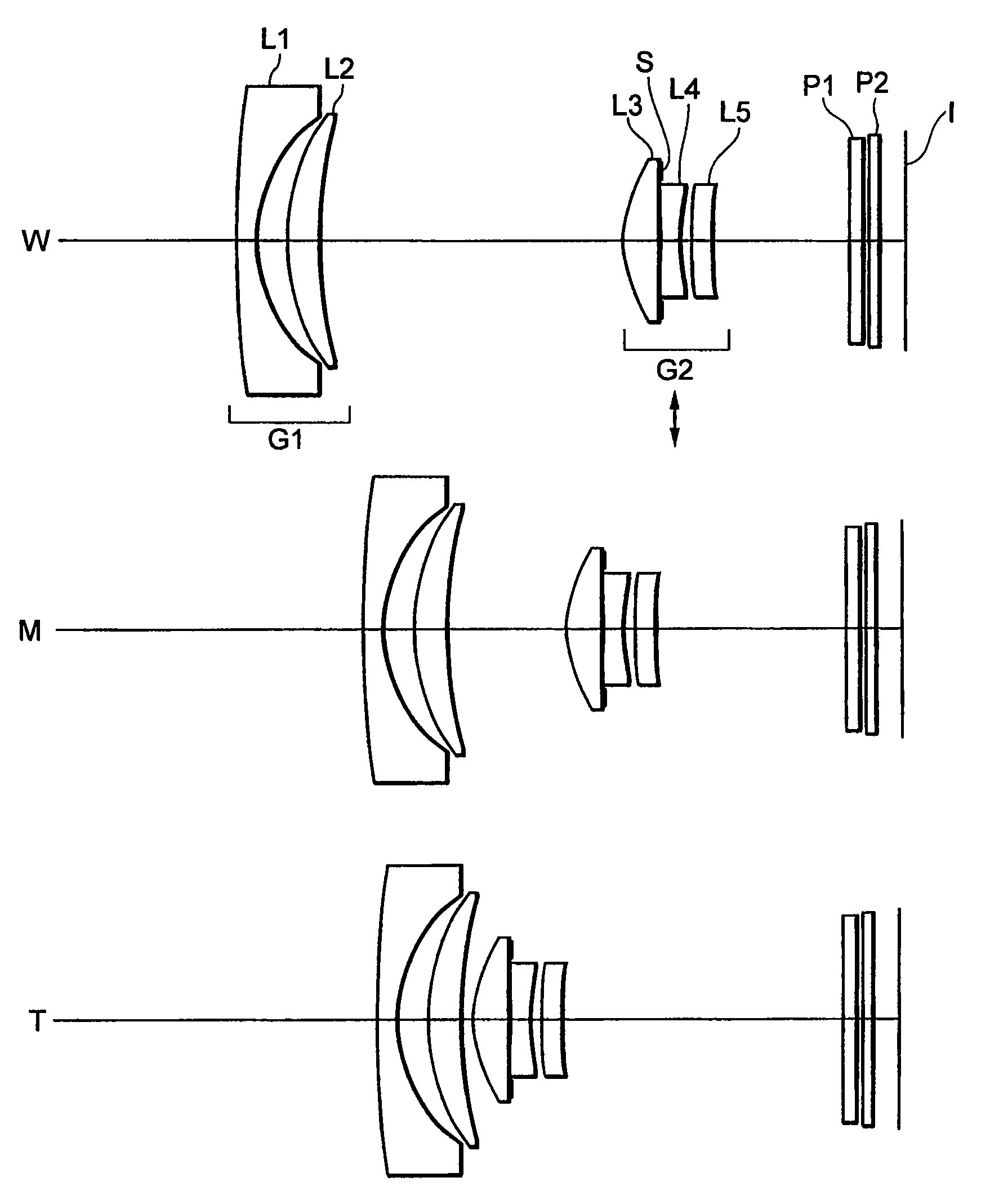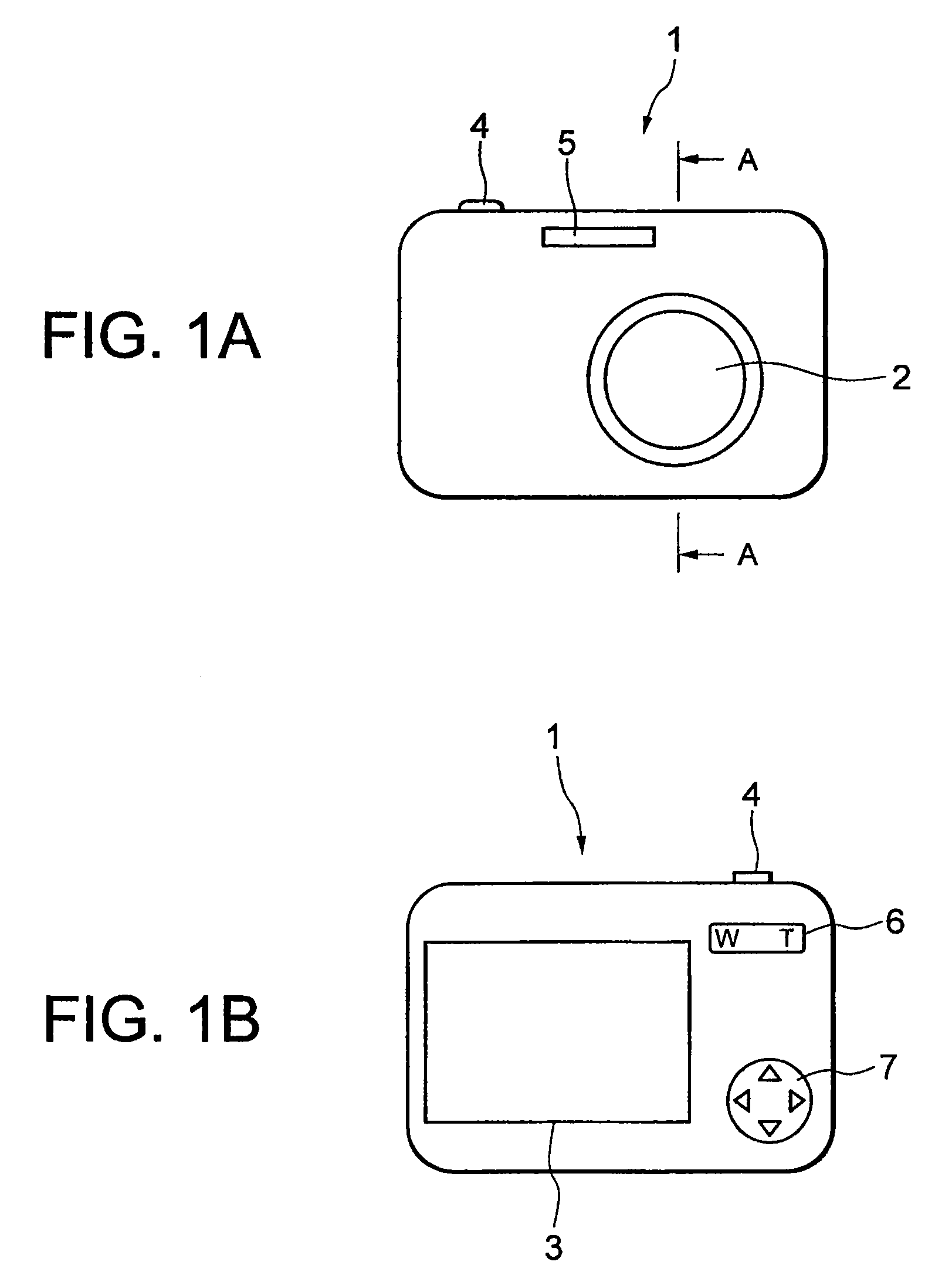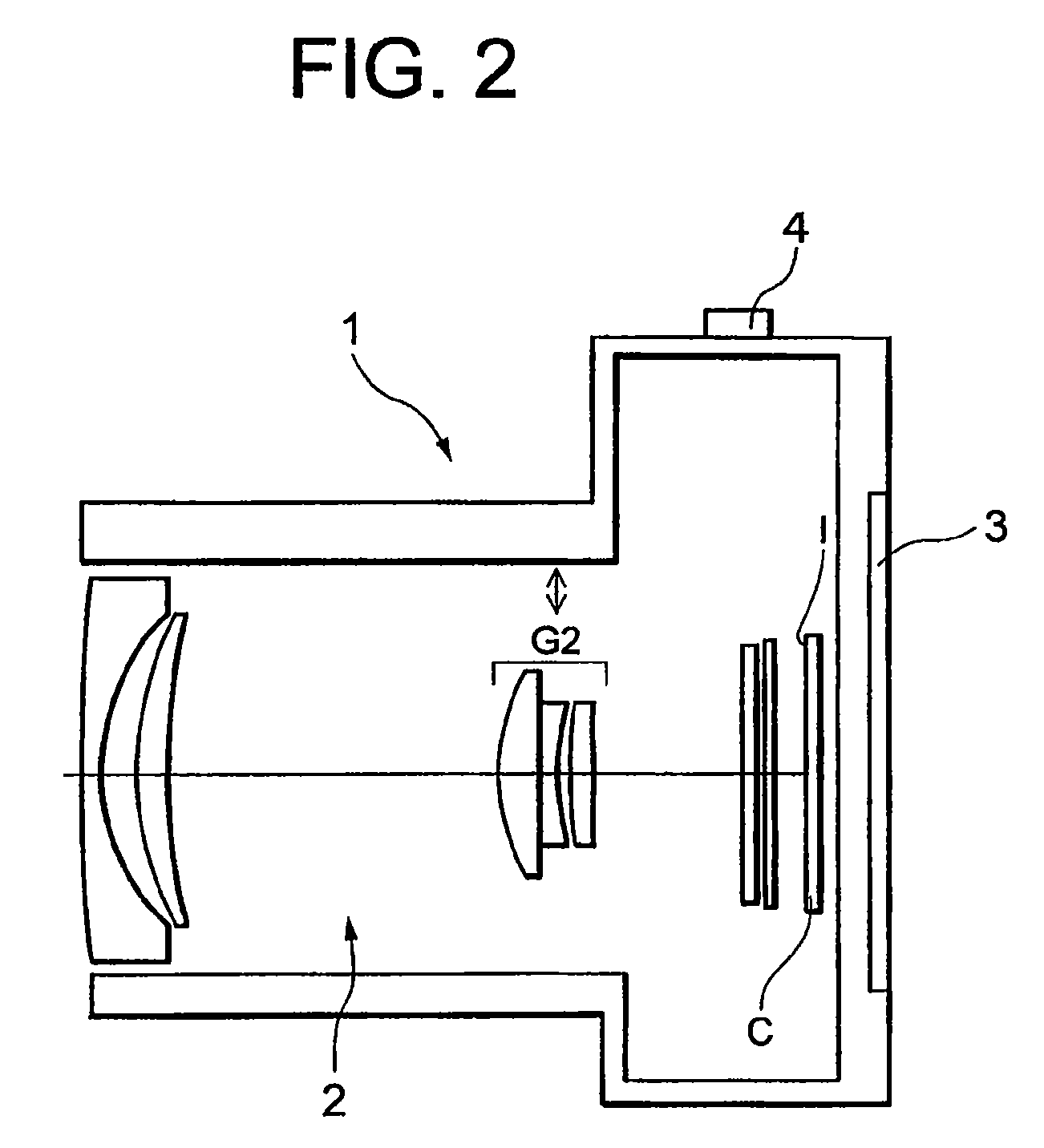Zoom lens system and optical apparatus using the same
a technology of zoom lens and optical apparatus, applied in the field of zoom lens system and optical apparatus, can solve problems such as severe deterioration of resolution
- Summary
- Abstract
- Description
- Claims
- Application Information
AI Technical Summary
Benefits of technology
Problems solved by technology
Method used
Image
Examples
example 1
[0117]FIG. 3 is a diagram showing a lens configuration of a zoom lens system according to Example 1 of the present embodiment, in which W denotes a wide-angle end state, M denotes an intermediate focal length state, and T denotes a telephoto end state. Reference symbols used in the following explanations are attached only to a diagram showing the wide-angle end state W, and are omitted in the other states. The same rule is applied to the other Examples.
[0118]In FIG. 3, the zoom lens system according to Example 1 is composed of, in order from an object, a first lens group G1 having negative refractive power, and a second lens group G2 having positive refractive power. When a state of lens group positions varies from a wide-angle end state W to a telephoto end state T, the first lens group G1 and the second lens group G2 are moved along an optical axis such that a distance between the first lens group G1 and the second lens group G2 decreases.
[0119]The first lens group G1 having negat...
example 2
[0136]FIG. 6 is a diagram showing a lens configuration of a zoom lens system according to Example 2 of the present embodiment, in which W denotes a wide-angle end state, M denotes an intermediate focal length state, and T denotes a telephoto end state.
[0137]In FIG. 6, the zoom lens system according to Example 2 is composed of, in order from an object, a first lens group G1 having negative refractive power, and a second lens group G2 having positive refractive power. When a state of lens group positions varies from a wide-angle end state W to a telephoto end state T, the first lens group G1 and the second lens group G2 are moved along an optical axis such that a distance between the first lens group G1 and the second lens group G2 decreases.
[0138]The first lens group G1 having negative refractive power as a whole is composed of two lenses that are, in order from the object, a double concave negative lens L1, and a positive meniscus lens L2 having a convex surface facing the object.
[0...
example 3
[0147]FIG. 9 is a diagram showing a lens configuration of a zoom lens system according to Example 3 of the present embodiment, in which W denotes a wide-angle end state, M denotes an intermediate focal length state, and T denotes a telephoto end state.
[0148]In FIG. 9, the zoom lens system according to Example 3 is composed of, in order from an object, a first lens group G1 having negative refractive power, and a second lens group G2 having positive refractive power. When a state of lens group positions varies from a wide-angle end state W to a telephoto end state T, the first lens group G1 and the second lens group G2 are moved along an optical axis such that a distance between the first lens group G1 and the second lens group G2 decreases.
[0149]The first lens group G1 having negative refractive power as a whole is composed of two lenses that are, in order from the object, a double concave negative lens L1, and a positive meniscus lens L2 having a convex surface facing the object.
[0...
PUM
 Login to View More
Login to View More Abstract
Description
Claims
Application Information
 Login to View More
Login to View More - R&D
- Intellectual Property
- Life Sciences
- Materials
- Tech Scout
- Unparalleled Data Quality
- Higher Quality Content
- 60% Fewer Hallucinations
Browse by: Latest US Patents, China's latest patents, Technical Efficacy Thesaurus, Application Domain, Technology Topic, Popular Technical Reports.
© 2025 PatSnap. All rights reserved.Legal|Privacy policy|Modern Slavery Act Transparency Statement|Sitemap|About US| Contact US: help@patsnap.com



